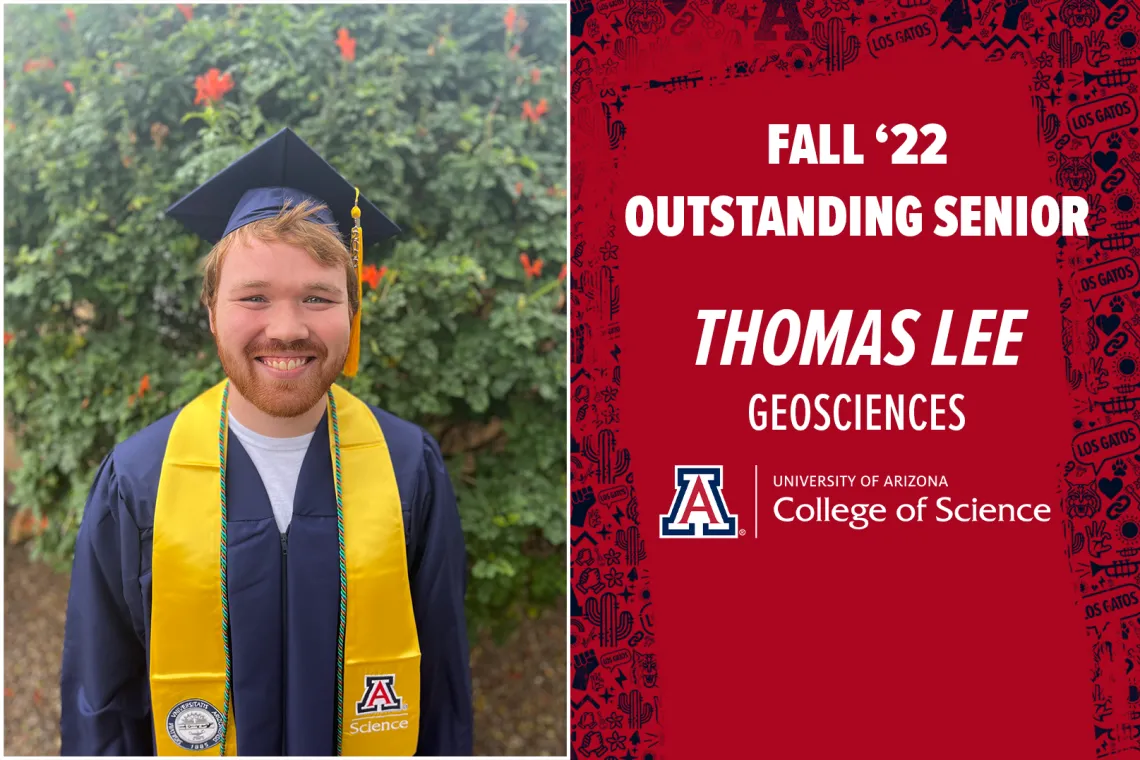Outstanding Seniors in the College of Science: Thomas Lee

This fall, departments in the University of Arizona's College of Science nominated an outstanding senior who went above and beyond during their time as a Wildcat. We are pleased to share their stories as they reflect on their time at UArizona. Next up in the senior spotlight series is Thomas Lee.
Thomas Lee
Geosciences
College of Science: Why did you choose your area of study?
Lee: I chose geosciences because it seemed like a natural bridging of my scientific curiosity and love for the outdoors. I've specifically fallen into seismology and volcanology because it's important to me that my scientific interests have social relevance. As much as we've learned about earthquakes and volcanoes in the past 50 years, there are far more unanswered questions that are essential in understanding the hazards associated with these events.
COS: Tell us about a class or research project you really enjoyed
Lee: This semester I've been working on using seismological techniques to try and image the magma chamber beneath the Laguna del Maule volcano in Chile. It's common for the ground above volcanoes to uplift when magma is actively moving in the subsurface, but the uplift rates at Laguna del Maule are exceptionally high. Only a few volcanoes in the world have ever matched the uplift rate of Laguna del Maule and they sustained it for a year at most, usually far less. Laguna del Maule has sustained this rate for over 15 years now. The volcano hasn't erupted in a few thousand years and the last known explosive eruption was 500,000 years ago, but it has the potential to generate huge eruptions in the future. Understanding the physical and chemical properties of the magma chamber beneath the volcano is important, yet only a few studies have tried to constrain any information about the depth of the magma chamber beneath the surface. I've been working this semester on using a technique called receiver functions that uses energy from distant earthquakes to detect large changes in the subsurface geology, allowing us to estimate the depth of the magma chamber and other physical characteristics. This project is by far the most fun and rewarding project I've worked on in college and I've taken it much farther in a semester than I thought was possible for an undergraduate, thanks to guidance from Dr. Susan Beck and her graduate students in the Global Seismology and Tectonics (GSAT) group.
COS: What is one specific memory from your time at UA that you'll cherish forever?
Lee: Truly my most cherished memory from UA is a bit of an odd one, but I would be dishonest if I said it was anything else. My first semester as a freshman, my brother was in his last semester. I was nervously trying to get a feel for campus and asked my brother if there were any useful or relaxing places on campus that a freshman might not know about. He immediately spent several minutes describing in worrying detail the locations with the most lizards. It was not a joke - he genuinely thought the answer to my question was the location of lizards (Beneath the outdoor staircase on the East side of Communications there's a ton of them, and they're huge. He was not wrong).
COS: What is next for you after graduation?
Lee: I'm applying to graduate school right now hoping to begin a PhD program in Fall 2023. I want to continue working on projects similar to what I've done this semester at Laguna del Maule, as well as learn new techniques for understanding these volcanic systems on a broader scale. My long term goal is to work as a research scientist, whether it be at a University or government-funded institution like USGS. My dream job would be to work for someone like Cascade Volcano Observatory and actively monitor the volcanoes that pose a huge threat to large population centers (such as Mount Rainier does to Seattle).

